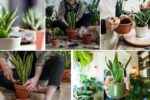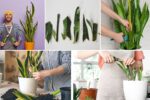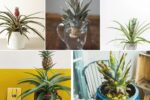Potted plants are a fantastic way to bring greenery into your home, patio, or garden. Whether you’re growing lush indoor plants, fragrant herbs, or colorful flowers, good drainage is essential for keeping your plants healthy and thriving. Without proper drainage, your plants risk root rot, fungal diseases, and stunted growth.
If you’ve ever dealt with soggy soil or mysteriously dying plants, poor drainage might be the culprit. In this guide, we’ll share practical, effective tips to improve drainage for potted plants so you can keep your leafy companions looking their best.

Why Is Drainage Important for Potted Plants?
Before diving into solutions, it’s important to understand why proper drainage matters:
- Prevents waterlogging: Excess water can suffocate plant roots by displacing the oxygen they need to function.
- Reduces root rot risk: Constantly soggy soil promotes fungal and bacterial growth that leads to root rot.
- Improves soil aeration: Well-draining soil allows air pockets to form, providing roots with essential oxygen.
- Promotes nutrient absorption: Healthy drainage ensures nutrients don’t get washed away while preventing salt buildup.
Now let’s get into the tips you can use to improve drainage for your potted plants!

1. Choose Pots with Drainage Holes
The simplest and most effective way to improve drainage is to use containers with drainage holes at the bottom. These holes allow excess water to escape, preventing water from pooling around the plant’s roots.
Quick Tips:
- Avoid using pots without drainage holes unless absolutely necessary.
- If your favorite decorative pot doesn’t have holes, use it as a cover pot with a plastic nursery pot inside.
- You can also drill holes carefully into ceramic or plastic containers using a masonry drill bit.

2. Add a Layer of Drainage Material
Adding a layer of coarse material at the bottom of your pot helps improve water movement and prevents soil from compacting near the drainage holes.
Materials you can use:
- Gravel or small pebbles
- Crushed terracotta
- Broken pottery shards
- Expanded clay pellets
Important Note: While traditional advice recommends this method, modern studies suggest it’s most effective when combined with good soil and drainage holes — it alone won’t prevent waterlogged roots if the soil above stays saturated.

3. Use a Well-Draining Potting Mix
Your choice of soil plays a huge role in drainage. Regular garden soil is too dense for potted plants, as it compacts easily and retains excess water.
Look for potting mixes labeled:
- “Well-draining”
- “Cactus and succulent mix”
- “Indoor plant mix”
DIY Potting Mix Idea:
- 2 parts peat moss or coco coir
- 1 part perlite or coarse sand
- 1 part compost or garden soil
This balanced mixture ensures water retention without becoming waterlogged.

4. Elevate Your Pots
Lifting your pots off the ground improves airflow under the pot and allows water to drain freely.
How to elevate pots:
- Use pot feet or plant stands.
- Place bricks, wooden slats, or small stones under the container.
- Install a plant caddy with wheels for easy movement and better drainage.
This prevents moisture from getting trapped between the pot base and the ground, which can lead to mold and root issues.

5. Water Wisely
Overwatering is one of the most common causes of poor drainage problems. Learning how and when to water your plants can make a big difference.
Smart Watering Tips:
- Check soil moisture by inserting your finger 1-2 inches deep. Only water when it feels dry.
- Use a watering can with a narrow spout for controlled watering.
- Water until you see it coming out of the drainage holes, then empty the saucer underneath.
- Avoid leaving water standing in saucers, as it can lead to root rot.
6. Improve Soil Structure with Amendments
Incorporating soil amendments into your potting mix enhances its drainage and texture.
Great soil amendments include:
- Perlite: Lightweight volcanic glass that improves aeration.
- Pumice: Porous rock that holds nutrients while enhancing drainage.
- Coarse sand: Adds grit and prevents soil compaction.
- Coco coir: Sustainable alternative to peat moss that retains moisture without waterlogging.
Mix these additives evenly into your potting soil to create a light, breathable growing medium.
7. Repot Regularly
As plants grow, their roots fill up the pot, which can lead to compacted soil and poor drainage. Repotting gives your plant fresh soil and space to breathe.
When to repot:
- Every 1-2 years for fast-growing plants.
- When roots start growing out of the drainage holes.
- If the soil becomes compacted and water no longer drains efficiently.
Pro Tip: Always use fresh, well-draining potting mix when repotting.
8. Add Activated Charcoal
Adding a thin layer of activated charcoal to the bottom of your pot helps absorb excess moisture and prevents unpleasant odors or root rot, especially in indoor plants.
Benefits of activated charcoal:
- Improves soil drainage.
- Filters impurities and toxins from water.
- Reduces bacterial and fungal growth.
It’s particularly useful in terrariums and small indoor containers where airflow is limited.
9. Opt for Self-Watering Pots with Care
Self-watering pots can be a blessing or a curse for drainage. While they help maintain consistent moisture, poor management can lead to waterlogged soil.
To use self-watering pots effectively:
- Fill the reservoir only when the topsoil feels dry.
- Use a well-draining potting mix with added perlite or pumice.
- Avoid filling the water reservoir during cool, cloudy seasons when plants need less water.
10. Monitor and Maintain Drainage Over Time
Even the best setup needs occasional maintenance to stay effective.
Maintenance Tips:
- Check drainage holes regularly for blockages.
- Clean pots before repotting to remove old soil and mineral deposits.
- Refresh the top inch of soil every few months to improve aeration.
- Adjust watering frequency seasonally as plant needs change.
Final Thoughts
Proper drainage is the foundation of healthy potted plants. By choosing the right pots, soil, and watering practices, and adding materials like gravel, perlite, or activated charcoal, you can create the ideal environment for your plants to thrive.
Remember — plants love a good balance of moisture and airflow. Implement these simple yet effective drainage tips, and you’ll enjoy greener, healthier, and happier plants for years to come.





